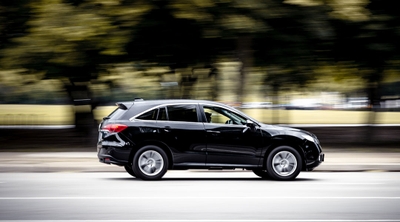How to drive on the highway
3 min read
Whether you’re embarking on a lengthy road trip or simply making a daily commute to work or school, taking the highway is often the most efficient way to get from point A to point B. But driving on the highway for the first time alone can be daunting. Following a few simple tips can help newer drivers — or even those who haven’t driven for an extended period — safely navigate highway driving.
Merge quickly and maintain a safe speed
For many new drivers, high speeds can be the most intimidating part of driving on the highway. While driving too fast can be dangerous, going too slowly can be unsafe as well. When merging onto an interstate, get up to speed quickly and keep pace with the traffic flow. Once you’ve merged, if you prefer to drive slower than other traffic, keep to the right so that faster traffic can pass you on the left. It may take a few tries to learn how to drive on the interstate.
Most interstate highways have a speed limit of at least 55 mph, and the maximum speed limit varies by state. Higher speed limits create a greater risk. You have less time to respond to traffic disruptions, and your vehicle will take more time – and distance – to stop.
When the interstate is congested, pay attention to what’s happening a couple of car lengths ahead of you so you can adjust your speed quickly. Be sure always to leave ample room between your car and the vehicle in front of you.
When you keep right except to pass, you help keep the flow of traffic smooth and may reap other benefits, according to the National Motorists Association. Other potential perks of using the left lane for passing only include increased fuel efficiency because of fewer braking/acceleration cycles and reduced traffic congestion since drivers aren’t creating as many obstacles for each other.
According to the National Highway Traffic Safety Administration (NHTSA), if a driver tailgates you, stay calm. If you’re able to safely merge right to allow the car behind you to pass, do so. If the situation escalates, pull off and notify the authorities. Remember: you may not be able to control the behavior of others, but you can control yourself. Always do your best to stay calm and focused when you’re behind the wheel. Get more tips for dealing with tailgaters.
Reduce distractions
It’s essential to stay alert when driving on the highway. Road conditions can change quickly. A disabled vehicle could be experiencing mechanical problems in a traveling lane, or traffic could abruptly slow down due to something on the road. It’s crucial to stay focused entirely on the road ahead and pay attention to what other drivers are doing.
According to the Insurance Institute for Highway Safety, using a mobile device, adjusting the radio, or eating can be distracting and increase the risk of collision. To avoid any unnecessary risk, remember to plan. Before heading out on the road, do the following so you can stay focused while driving:
- Send any last-minute texts before silencing your phone and securing it out of sight.
- Make sure your radio or sound system is set to your preferences, so you won’t need to adjust it while driving.
- Eat a snack before you drive, or plan to eat after arriving at your destination.
- Refrain from doing anything that might take your hands off the wheel or your eyes off the road. Whatever it is, it can wait.
When to start driving on the highway
For new drivers, driving on the highway can be intimidating. To ease into highway driving, consider doing so on a clear day. Avoid driving during rush hour or after dark until you feel more comfortable on the highway (get tips for driving at night). Use your best judgment in all situations — highway driving can be overwhelming; it’s okay to ease into it.






